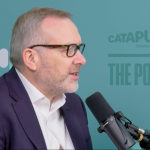
Harnessing data modelling for planning

In response, The Next Zero Places Innovation Brief shares the benefits of the latest Plantech and data management tools. Embracing them allows planners to see the implications of their choices more accurately than ever. This, in turn, allows them to project and predict the future with greater levels of confidence. Data can be fed back into systems too. Plantech automatically lends itself to continual improvement.
Recent examples, including a 2015 data sharing trial from Greater Manchester’s Combined Authority, proved to have the following broad benefits.
- Speed. Information about utility capacity was shared more quickly
- Early Warnings. Insights into future demand allowed capacity to be prioritised
- Integration. A whole-system overview was made available.
Transport Management Using Improved Planning Tools
Transport planning has historically relied on surveys and sampling. People were asked where journeys started and ended or traffic was counted at specific points thought to be representative. Today, thanks to digital advances, a much richer set of data is available. Easily accessible GPS, mobile phone triangulation and vehicle telematics let us build real-time pictures of how people move. This has enabled new analytical techniques to develop. Artificial Intelligence (AI) has created Agent Based Models that can ‘road test’ plans too. A proposed new stop on a bus route, for example, can be tested by simulation with digital ‘people’ able to make autonomous decisions.
Digital modelling can also assess flows on our roads to support highway authorities. Smoothing flows through better planning helps stop emission spikes caused by stop-start traffic. As an example, Connected Places Catapult pioneered the use of a digital twin model for Highways England. Their simulated road network, which mirrored real life, allowed air quality traffic restrictions and other measures to be evaluated before anything was implemented.
Integrated Planning Through Demand Modelling
There is a danger to modelling pieces of infrastructure, such as roads, in isolation. Net Zero will only be achieved through a fully integrated strategy. It is here where Plantech and the unprecedented amount of data available will have the most impact.
The Next Zero Places Innovation Brief shares 2019’s “Demand Modelling and Assessment through a Network Demonstrator (DEMAND)” project as an example. Connected Places Catapult and the UK Department for Transport developed a large-scale Agent-Based Model (ABM) of the Tyne and Wear Region. It explored the travel choices of 650,000 synthetic residents. Each resident, or agent, was given a range of characteristics, places to live, work and play and a daily activity schedule. Because these were informed by anonymous real mobile phone data, they were incredibly accurate. The DEMAND tool was used to assess and evaluate policy and investment decisions. This led to more low carbon choices through sharing schemes and electric powered vehicles.
These are all examples of powerful Plantech that exists today. The role of the Connected Places Catapult continues to be finding further places to apply it. For example, the same data modelling Rolls Royce uses for remote engine management could be used to manage energy consumption in buildings. Extending this across a neighbourhood strengthens decisions on local building design and power generation. In this way, Plantech could move whole regions towards Net Zero.
This article is a summary of a full feature article which you can read in our Net Zero Places Innovation Brief.





